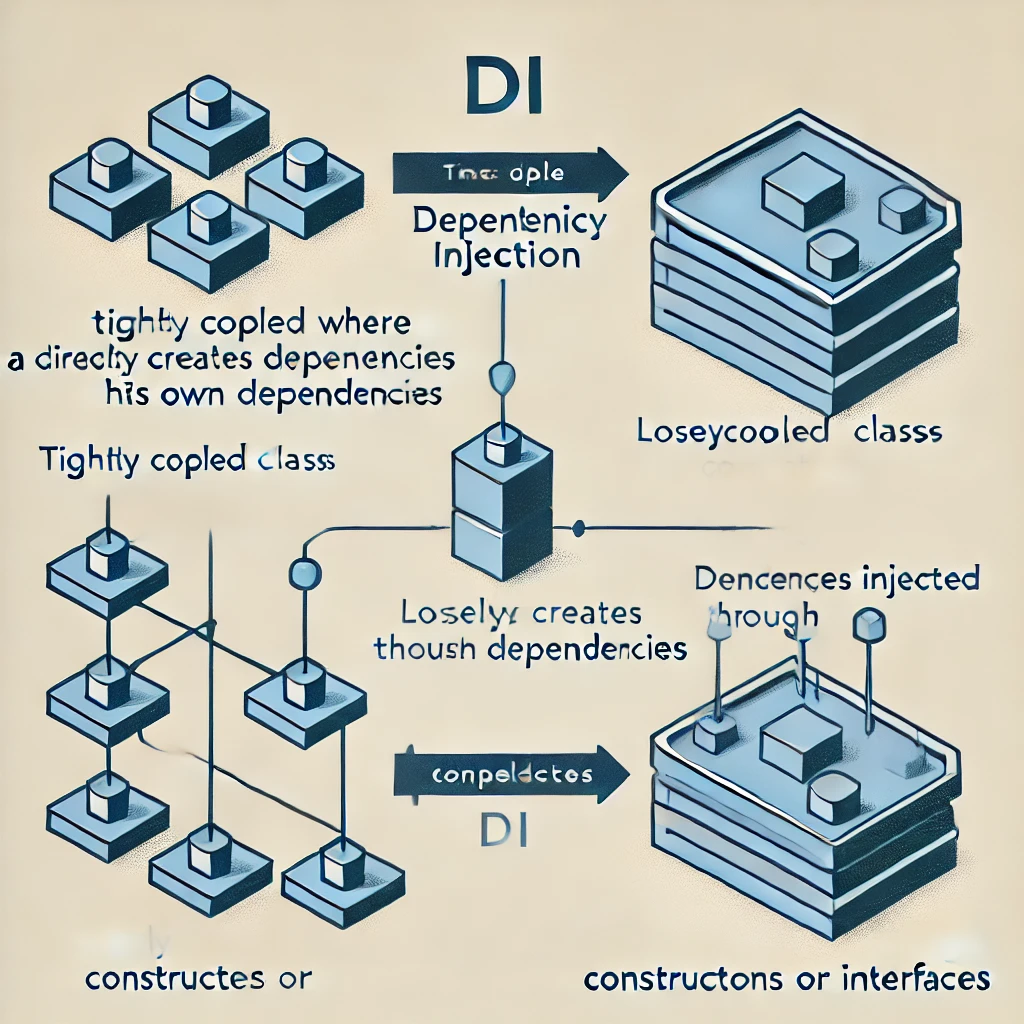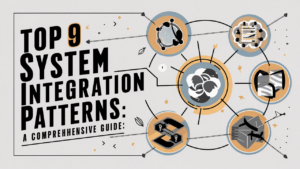Dependency Injection (DI) is a powerful design pattern used to implement Inversion of Control (IoC), which helps to decouple components in your software architecture. By injecting dependencies, you make your code more modular, easier to test, and more maintainable. Let’s explore the concept of DI, its benefits, and some key questions to consider before creating instances in your code.
What is Dependency Injection?
Dependency Injection involves passing (injecting) the dependencies (services) that a class needs instead of the class creating them itself. This is usually done through constructors, setters, or interface methods. By doing this, you separate the creation of dependencies from the business logic, promoting better design and testability.
Without DI vs. Using DI
Without DI:
- Class A directly creates an instance of Service 1 and Service 2.
- This approach leads to tight coupling, making the code less flexible and harder to test.
Using DI:
- Service 1 and Service 2 are provided to Class A through a constructor.
- This approach promotes loose coupling, making the code more modular and easier to test.
Key Benefits of Dependency Injection
- Loose Coupling: Classes depend on abstractions (interfaces) rather than concrete implementations.
- Improved Testability: Dependencies can be easily mocked or stubbed in unit tests.
- Easier Refactoring: Changes in dependencies don’t affect the classes using them.
- Centralized Configuration: DI frameworks manage the lifecycle and configuration of dependencies.
7 Questions to Ask Before Creating an Instance
- Is this object a service or a utility class?
- Service classes contain business logic and should be injected.
- Utility classes are stateless with helper methods and may not need injection.
- Will I need to swap this implementation for another?
- Tight coupling with “new” makes it hard to swap implementations.
- Use interfaces and inject dependencies for flexibility.
- Does this object have external dependencies?
- Coupling to external dependencies can be avoided by letting a DI framework handle it.
- Is the object for carrying data?
- Data objects (DTOs, POCOs) don’t usually need to be injected and can be instantiated directly.
- Is the object relevant within a limited scope?
- Temporary collections or transient objects don’t need to be injected.
- Is this a configuration?
- Centralize configuration management by injecting settings into services.
- Is this a Cross-Cutting Concern?
- Use DI for logging, caching, security, and other cross-cutting concerns.
Conclusion
Dependency Injection is a critical pattern for creating flexible, maintainable, and testable code. By considering the nature of your dependencies and applying DI appropriately, you can significantly improve the structure and quality of your applications.







